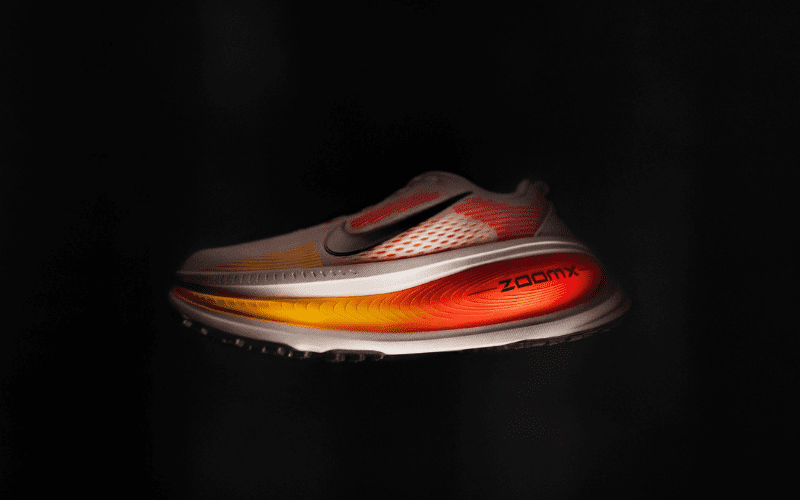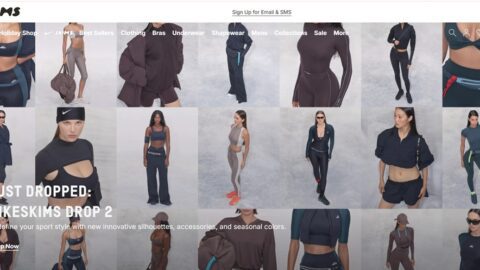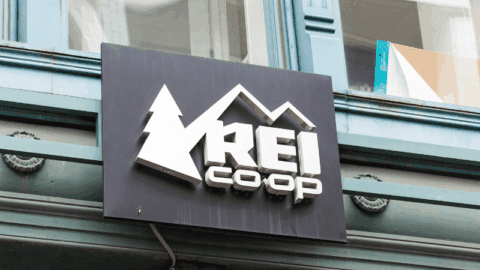This article first appeared in our sister publication Shop Eat Surf Outdoor (SESO)
Nike’s turnaround strategy to rebuild its business is showing early signs of success, particularly in its wholesale channel, North American market and the running category, according to executives on the company’s Q1 2025 earnings call Sept. 30. While noting these initial wins, CEO Elliott Hill and CFO Matthew Friend acknowledged that significant work remains, especially in Greater China, the Nike Direct business and the sportswear category.
“This quarter, our ‘Win Now’ actions drove momentum in the areas we prioritized,” Hill said at the start of the call. “First, running, North America and wholesale partners. It showed that we’re making the right choices, consumers are responding, we’re getting some wins under our belt.”
However, he was quick to temper expectations: “The truth is, Nike’s journey back to greatness has only just begun,” Hill said. “There is significant work ahead, especially in the areas of sportswear, Greater China and Nike Direct. And as I said to the team, progress won’t be perfectly linear, but the direction is.”
Q1 Fiscal 2025 Results
In reported revenue unless noted otherwise:
- Total Revenue: $11.7 billion, up 1%
- Net Income: $0.7 billion, down 31%
- Gross Margin: 42.2%, down 320 basis points
- NIKE Direct Revenue: $4.5 billion, down 4%
- NIKE Brand Digital Revenue: Down 12%
- NIKE Store Revenue: Down 1%
- Wholesale Revenue: $6.8 billion, up 7%
- Converse Revenue: $366 million, down 27%
Geographically:
- North America Revenue: $5 billion, up 4%
- EMEA Revenue: $3.3 billion, up 1% in constant currency
- Greater China Revenue: $1.5 billion, down 10% in constant currency
- APLA Revenue: $1.5 billion, up 1% in constant currency
The ‘Sport Offense’ Reorganization
A cornerstone of the turnaround strategy is a major internal reorganization dubbed the “sport offense.” The company has realigned its structure away from traditional gender-based categories like men’s, women’s and kids’ implemented by previous Nike CEO John Donahoe, and is now organized by specific sports.
“This new formation and ways of working will align our three brands — Nike, Jordan and Converse — into more nimble, focused teams by sport,” Hill explained. “We’ll gain sharper insights to fuel innovation in storytelling and connect with the communities of each sport in more meaningful ways. Collectively, we’ll have a better coordinated attack, with each brand forming a distinct identity and delivering a clear attention to serve different consumers in the marketplace.”
Hill pointed to early successes from this model, citing the redesign of the House of Innovation in New York and a store in Austin, Texas.
- House of Innovation, New York: “We’re now able to take a consumer into a world of Jordan, a world of Nike running or a world of Nike global football,” Hill said. “It’s an immersive sport experience and the refresh has already led to double-digit revenue increases.”
- South Congress Store, Austin: “We recently redesigned our South Congress store in Austin to focus only on running and training and sales have significantly increased,” he added.
Hill emphasized the strategic importance of this change: “It’s imperative to bring our entire organization closer to the athletes we serve. That’s why the sport offense is going to be so critical to our success. Organizing by sport gives us a much clearer point of view.”
Running Leads the Way in Nike’s Turnaround
The running category serves as the primary proof point for the new strategy’s effectiveness, Hill said. The running team was the first to adopt the “sport offense” structure, leading to clearer consumer insights and product innovation.
“It turns out runners mostly want three things from their running shoes — big cushioning, stability or an everyday shoe that returns energy,” Hill shared. “In response, we’ve moved with a sense of urgency and completely redesigned the Vomero, the Structure and the Pegasus to solve for these three insights.”
This focused approach, integrating innovations like Nike Air, Flyknit and ZoomX, has paid off, he said. “The early results have been positive, with Nike running growing over 20% this quarter,” Hill said. “Our opportunity is to quickly seize the benefits of a sport offense and apply them to more sports and sport culture.”
The company plans to replicate this playbook in other key areas, including global football, basketball and training. For the upcoming 2026 World Cup, Nike is preparing to launch a new apparel innovation platform and several football-streetwear collections.
Areas Requiring Improvement
While encouraged by the progress, executives were transparent about ongoing challenges.
Sportswear and Classic Franchises
The sportswear division continues to be a weak spot. “Our sportswear teams have work to do to get sharper on the consumers we’re serving, and we see it in our results,” Hill admitted. “Our business continues to decline.”
A key priority is managing the health of its largest classic sneaker franchises.
- Air Force 1 “is stabilizing.”
- Air Jordan 1: “Inventory levels are returning to health.”
- Dunk “continues to be managed aggressively down in all” geographies.
Greater China
The Greater China market remains a significant headwind, with revenue down 10% in the quarter. Structural challenges are impacting performance and executives acknowledged the complexity of the turnaround.
“My leadership team and I were in China a few weeks ago,” Hill said. “It is even more clear that our path to winning in China is through sport.”
The strategy involves refreshing its 5,000-plus mono-brand stores into distinct sport experiences, but Hill cautioned “this will take investment and it will take time.”
CFO Friend added that while China inventory levels are improving, “store traffic and in season sell-through continues to be a headwind” and the digital marketplace remains “highly promotional.” As a result, Friend expects “revenue and gross margin headwinds from Greater China to continue throughout fiscal ‘26.”
Nike Direct
The Nike Direct business, particularly the digital channel, is also under pressure. Revenue for Nike Direct (stores plus online) was down 5%, with Nike Digital declining 12%. The company made a “strategic decision to become less reliant on classic franchises and pull back on our promotions for the long-term health of our brands and marketplaces.”
Friend explained the consequences: “Organic traffic continues to decline double digits. Traffic comps will remain under pressure and so we do not expect Nike Direct to return to growth for fiscal ‘26.”
The strategy aims to reposition Nike Digital as a full-price business, which has helped rebuild trust with wholesale partners.
Converse
Converse is in the early stages of a reset. Its classic Chuck Taylor franchise is undergoing a “global market reset.” Friend stated that “Converse is under new leadership and resetting its marketplace and brand. Therefore, we expect revenue and gross margin headwinds from Converse to continue throughout fiscal ‘26.”
The Financial Picture: Tariffs and Outlook
A significant factor impacting Nike’s financial outlook is the rising cost of tariffs, and Nike is now expecting a bigger hit.
“With the new rates in effect today, we now estimate the gross incremental cost to Nike on an annualized basis to be approximately $1.5 billion, up from the $1 billion we shared 90 days ago,” Friend said. “Given the magnitude and timing of the most recent rate increases, we now expect the net headwind in fiscal ‘26 to increase from approximately 75 basis points to 120 basis points to gross margin.”
For Q2 Fiscal 2025:
- Revenue: Expected to be down low single digits.
- Gross Margin: Expected to be down approximately 300 to 375 basis points, including a 175-basis point headwind from new tariffs.
- SG&A: Expected to be up high single digits.
For Full-Year Fiscal 2026:
- Wholesale: Expected to return to modest growth, with the spring order book up versus the prior year.
- Nike Direct: Not expected to return to growth.
- Geographies: North America is expected to lead the recovery, while Greater China will require more time.
- SG&A: Expected to grow low single digits.
A Path to Recovery
Despite the mixed results and ongoing challenges, Nike’s leadership expressed confidence in their strategy. The focus is on executing the “Win Now” actions while embedding the “sport offense” across the organization.
“We’re confident that the Win Now actions are the right things to move us in this direction,” Friend said, referencing the long-term goal of returning to double-digit margins.
Hill concluded the call by reinforcing the team’s commitment: “We are in the early stages and our comeback will take time and our progress won’t be linear,” he said. “Our teams are energized, they’re inspired and they’re ready to compete. We’re getting back to leveraging Nike Inc.’s unmatched portfolio of brands, sports and countries to drive deeper consumer connections and profitable, sustainable growth.”













